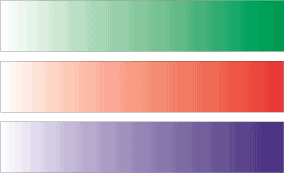You are here: Nature Science Photography – Lightness and color – Color saturation
In the section on the CIE Lab color space, we already mentioned that color saturation is the ratio between the chromaticity of a surface and its brightness. It is a measure of the spectral purity of a color, i.e., the degree of its contamination with non-dominant wavelengths. The intensity of a highly saturated color is close to its dominant wavelength. In contrast, an unsaturated color contains more or less strong entries from other spectral ranges. Unsaturated colors are achromatic (black, gray, white). Colors with low saturation are called pastel colors. Saturated colors are characterized by high spectral purity and high color intensity. In figure 39 CIE chromaticity diagram xyY color space, the most saturated colors lie on the spectral color line, and if we follow the dashed line from P to P‘, we can see the saturation levels from white to green or in other directions from white to blue or red.

Because it matches their memory of the subject, many photographers prefer saturated colors. You know how it is; everything was better in the past, and summer isn’t what it used to be either. Our memory tends to idealize and block out negative experiences. Perhaps this is so that we don’t have to constantly get worked up about the past. This applies to vacation experiences just as it does to color impressions.
Digital image processing has a simple way to increase color saturation. The command Image – Adjust – Hue/Saturation in Photoshop© opens a menu that allows you to specifically manipulate the saturation of individual tonal value ranges. Depending on whether you are working in RGB or Lab mode, the process already mentioned in the section „CIE Lab – Description of impressions in device-independent reference systems“ runs under the hood.
In order to influence the color saturation during the exposure, we primarily have to control the surface reflections. They superimpose a wavelength-independent white on the light coming from the interior of the object, which has interacted with the dyes and is therefore colored, thus mixing the dominant wavelength and reducing the saturation. But the scattering of the signal we perceive by water vapor molecules and dust particles in the air also contributes to the reduction of color saturation.
Next Film selection
Main Lightness and Color
Previous Digital temperature correction
If you found this post useful and want to support the continuation of my writing without intrusive advertising, please consider supporting. Your assistance goes towards helping make the content on this website even better. If you’d like to make a one-time ‘tip’ and buy me a coffee, I have a Ko-Fi page. Your support means a lot. Thank you!


 Since I started my first website in the year 2000, I’ve written and published ten books in the German language about photographing the amazing natural wonders of the American West, the details of our visual perception and its photography-related counterparts, and tried to shed some light on the immaterial concepts of quantum and chaos. Now all this material becomes freely accessible on this dedicated English website. I hope many of you find answers and inspiration there. My books are on
Since I started my first website in the year 2000, I’ve written and published ten books in the German language about photographing the amazing natural wonders of the American West, the details of our visual perception and its photography-related counterparts, and tried to shed some light on the immaterial concepts of quantum and chaos. Now all this material becomes freely accessible on this dedicated English website. I hope many of you find answers and inspiration there. My books are on